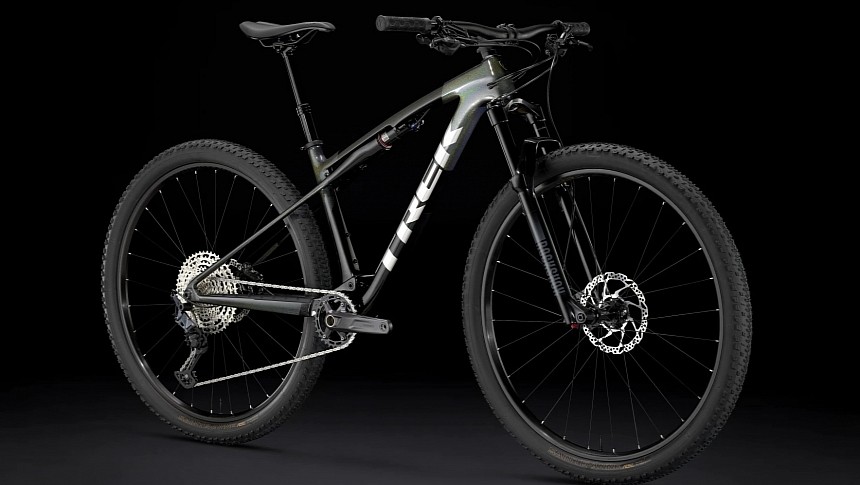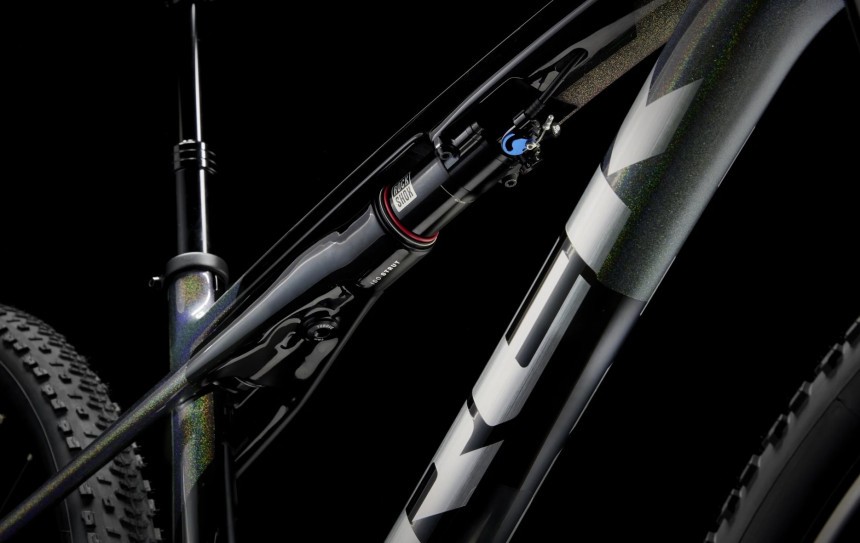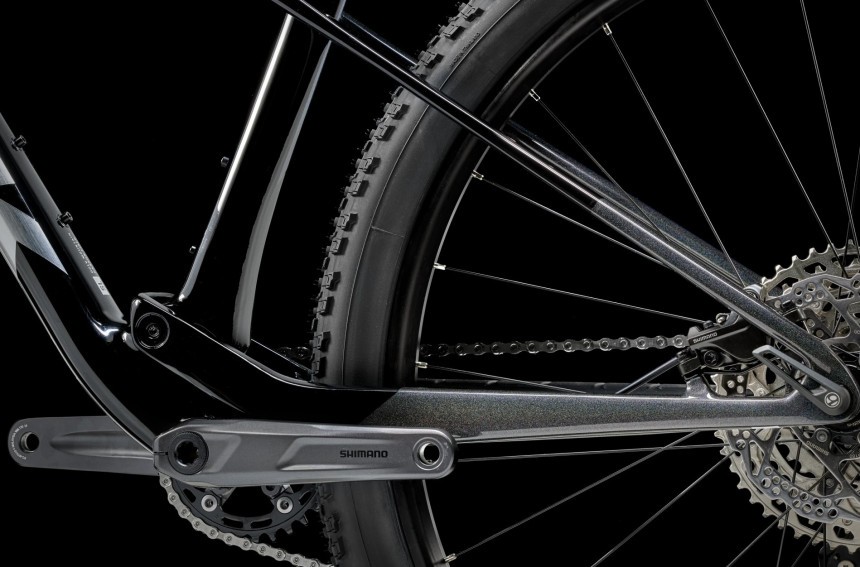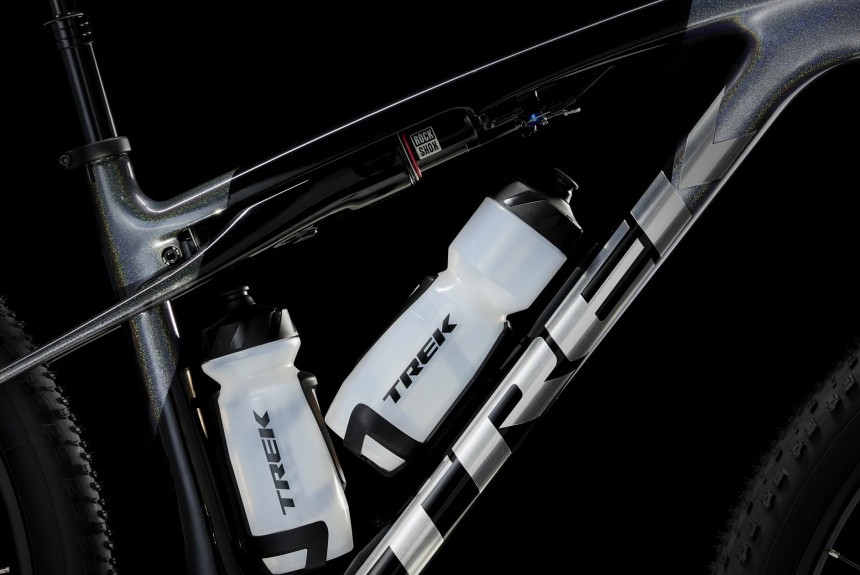I'm not at all afraid to admit that downhill MTBing isn't really my thing. However, when it comes to cross-country riding, I fell in love with the sport long before I even considered it. Well, this time around, we dive deeper into Trek's most affordable hunk of carbon fiber designed to make light work of anything your adventures and even time trials throw at you.
If you often follow autoevolution, then you're very well aware of the fact that I love myself a solid bicycle. However, I'm also a human being, and spending my life savings on a bike isn't something I often aim to do. However, upon seeing Trek's freshest Gen 2 Supercaliber SL 9.6, I couldn't help but wonder if I should dish out the $4,200 (€3,850 at current exchange rates) to get my hands on one, too. Why? That's exactly what we're here to find out.
First and foremost, the Supercaliber lineup is considered Trek's go-to solution for riders and athletes alike looking to bring the best of the best to the XC game. But, being their peak stuff, they typically aren't cheap; some of their models fetch as high as $12K or more. While this version is cheaper, it's still infused with the same R&D designed to give riders a machine that coasts on the cusp of a hardtail and full-suspension machine. In short, it's the best of both worlds.
Now, the signature feature of the Supercaliber series is the shock we see attached to the top tube. Actually, 'attached' doesn't quite do this section justice; it's actually integrated into the tube structure itself. This gives riders up to 80 mm (3.1 in) of rear-wheel travel and, I quote, "without compromising on pedaling efficiency."
What does all this mean for riders looking for a do-anything kind of machine? Well, it means the ability to still tackle those arduous climbs while transferring as much of your energy into the rear wheel, but once you arrive at the top of that peak, as you let yourself drop into rocks, roots, and ledges, the IsoStrut will be working its magic to handle whatever the trails throw at you on the way down.
Another benefit of such a setup is its ability to reduce the amount of fatigue a rider takes on while riding. Due to the presence of suspension systems at both the front and back, XC riders are promised more time spent in the saddle and more ground covered.
But a soft ride is only part of the story. Another side of the story has to do with the sort of building material Trek threw into this beast, nothing more than good old-fashioned OCLV carbon fiber, Trek's proprietary blend of carbon fiber, and in-house lay-up techniques. This ensures a light and strong bicycle, but another benefit is the way the pivot-less seat stays flexible whenever the rear takes a hit. Just magical, I tell you.
As for the rest of what Trek has in store for this Supercaliber, the drivetrain is from none other than Shimano. Here, a 12-speed Deore shifter moves an SLX M7100 long-cage derailleur on a 10-51 T cassette. Shimano also covers the braking power behind this bike. Then again, if you're not a fan of Shimano and what they bring to the XC MTB game, throw on whatever sort of setup you like, as long as you adhere to component sizing.
A final neat trick that Trek offers as standard on this bike is a dropper post. Depending on the size you eventually choose for your Gen 2 9.6, up to 170 mm (6.7 in) of travel can be had. Why is this an essential component these days? Simply because the magic of adjusting your saddle height on the fly is absolutely amazing and, sometimes, downright essential.
Once a whole bunch of Bontrager gear is thrown on, including the wheels, the saddle, the handlebar, and several others, we're looking at an XC beast that weighs 28.9 lbs (13 kg) for a size medium machine. But is this the end of this story?
Well, it all depends on what you aim to use a bike like this for. For example, this baby isn't the sort of bicycle that you can load up on the weekend with goods and cargo to go riding to the edge of town and camping out. Just a couple of water bottle holder mounts are all that we can look forward to.
But it is a bike designed to help serious riders, those of us who are aiming to put some more gold and silver on our shelves, to reach our goals. Sure, as you get better, you may find that you need a bigger, better, and more capable bike, but to get into the professional XC game for a tad over $4K is something that is worth considering.
Another aspect of this bike, and something I've even been noticing in the cycling industry, for that matter, is a drop in prices. For example, this version is $100 less expensive than last year's model, an achievement that not many manufacturers want to undertake, but Trek's doing it in the hopes of reeling you in. I'd bite this bait.
First and foremost, the Supercaliber lineup is considered Trek's go-to solution for riders and athletes alike looking to bring the best of the best to the XC game. But, being their peak stuff, they typically aren't cheap; some of their models fetch as high as $12K or more. While this version is cheaper, it's still infused with the same R&D designed to give riders a machine that coasts on the cusp of a hardtail and full-suspension machine. In short, it's the best of both worlds.
Now, the signature feature of the Supercaliber series is the shock we see attached to the top tube. Actually, 'attached' doesn't quite do this section justice; it's actually integrated into the tube structure itself. This gives riders up to 80 mm (3.1 in) of rear-wheel travel and, I quote, "without compromising on pedaling efficiency."
Another benefit of such a setup is its ability to reduce the amount of fatigue a rider takes on while riding. Due to the presence of suspension systems at both the front and back, XC riders are promised more time spent in the saddle and more ground covered.
But a soft ride is only part of the story. Another side of the story has to do with the sort of building material Trek threw into this beast, nothing more than good old-fashioned OCLV carbon fiber, Trek's proprietary blend of carbon fiber, and in-house lay-up techniques. This ensures a light and strong bicycle, but another benefit is the way the pivot-less seat stays flexible whenever the rear takes a hit. Just magical, I tell you.
A final neat trick that Trek offers as standard on this bike is a dropper post. Depending on the size you eventually choose for your Gen 2 9.6, up to 170 mm (6.7 in) of travel can be had. Why is this an essential component these days? Simply because the magic of adjusting your saddle height on the fly is absolutely amazing and, sometimes, downright essential.
Once a whole bunch of Bontrager gear is thrown on, including the wheels, the saddle, the handlebar, and several others, we're looking at an XC beast that weighs 28.9 lbs (13 kg) for a size medium machine. But is this the end of this story?
But it is a bike designed to help serious riders, those of us who are aiming to put some more gold and silver on our shelves, to reach our goals. Sure, as you get better, you may find that you need a bigger, better, and more capable bike, but to get into the professional XC game for a tad over $4K is something that is worth considering.
Another aspect of this bike, and something I've even been noticing in the cycling industry, for that matter, is a drop in prices. For example, this version is $100 less expensive than last year's model, an achievement that not many manufacturers want to undertake, but Trek's doing it in the hopes of reeling you in. I'd bite this bait.














